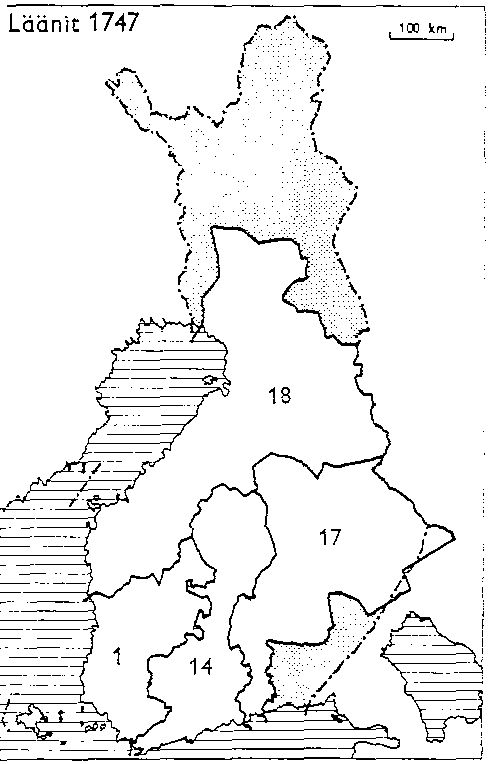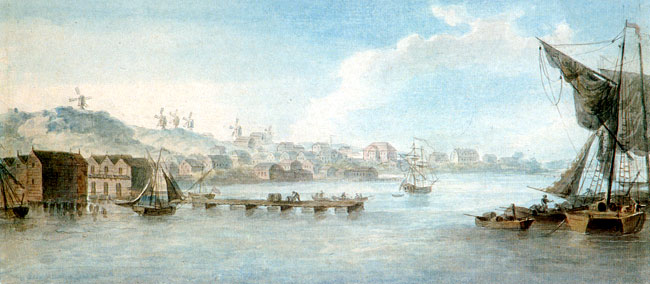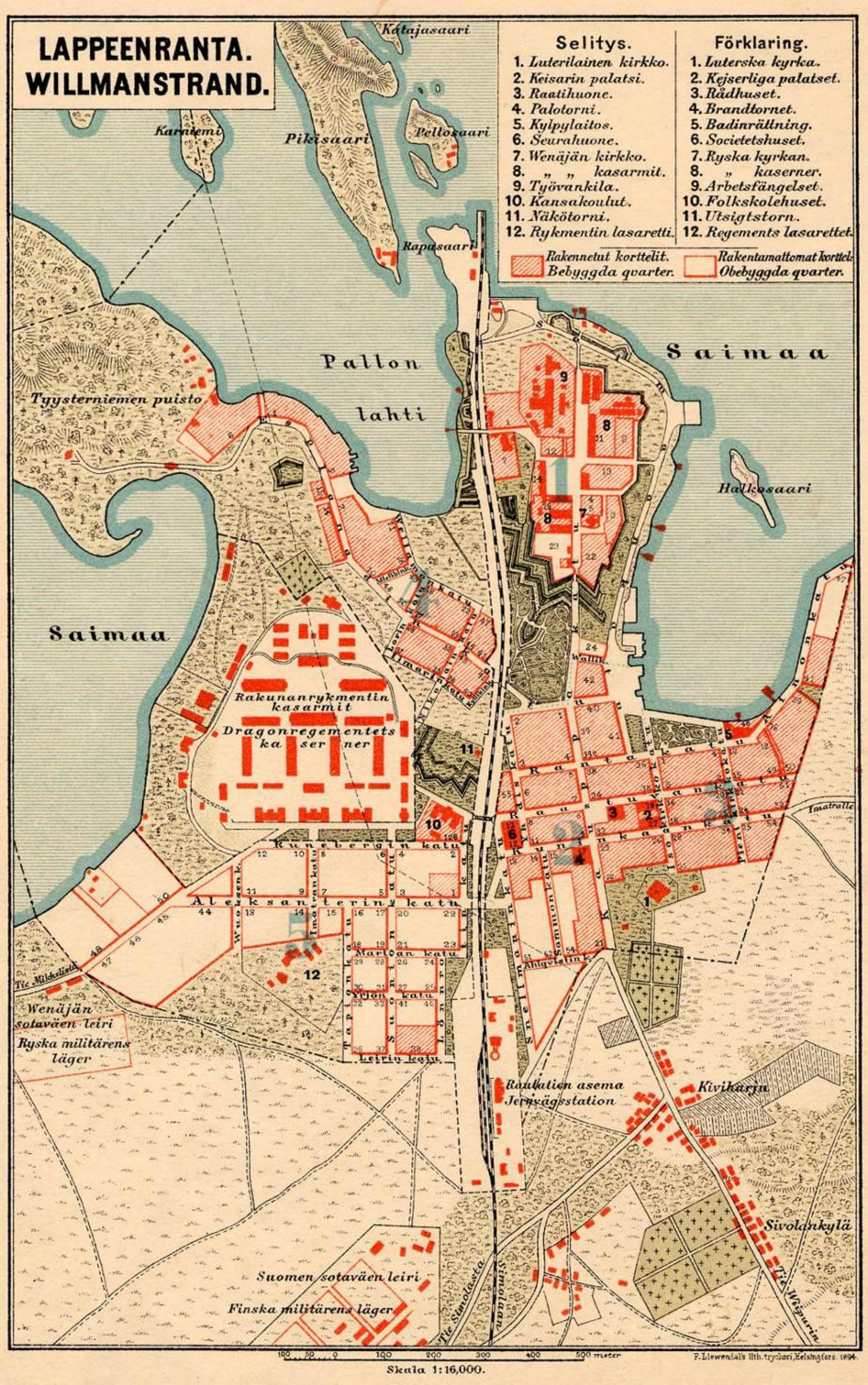|
Provinces Of Finland
Between 1634 and 2009, Finland was administered as several provinces, or counties (, ). Finland had always been a unitary state: the provincial authorities were part of the central government's executive branch and apart from Åland, the provinces had little autonomy. There were never any elected provincial parliaments in continental Finland. The system was initially created by the Instrument of Government (1634), Instrument of Government of 1634 when Finland was a Finland as part of Sweden, part of Sweden. Its makeup was changed drastically on 1 September 1997, when the number of the provinces was reduced from twelve to six. This effectively made them purely administrative units, as linguistic and cultural boundaries no longer followed the borders of the provinces. The provinces were eventually abolished at the end of 2009. Consequently, different ministries may subdivide their areal organization differently. Besides the former provinces, the municipalities of Finland form the ... [...More Info...] [...Related Items...] OR: [Wikipedia] [Google] [Baidu] |
Finland
Finland, officially the Republic of Finland, is a Nordic country in Northern Europe. It borders Sweden to the northwest, Norway to the north, and Russia to the east, with the Gulf of Bothnia to the west and the Gulf of Finland to the south, opposite Estonia. Finland has a population of 5.6 million. Its capital and largest city is Helsinki. The majority of the population are Finns, ethnic Finns. The official languages are Finnish language, Finnish and Swedish language, Swedish; 84.1 percent of the population speak the first as their mother tongue and 5.1 percent the latter. Finland's climate varies from humid continental climate, humid continental in the south to boreal climate, boreal in the north. The land cover is predominantly boreal forest biome, with List of lakes of Finland, more than 180,000 recorded lakes. Finland was first settled around 9000 BC after the Last Glacial Period, last Ice Age. During the Stone Age, various cultures emerged, distinguished by differen ... [...More Info...] [...Related Items...] OR: [Wikipedia] [Google] [Baidu] |
County Of Viborg And Nyslott
Viborg and Nyslott County (, ) was a Counties of Sweden, county of the Swedish Empire from 1634 to 1721. The county was named after the castle towns of Viborg () and Nyslott (, literally ''New Castle''), today located in the towns of Vyborg in Russia and Savonlinna in Finland. The county was Instrument of Government (1634), established in 1634 as Karelia County (, ), but in 1641 Nyslott County (, ) was broken out and made a separate entity. Remainder of Karelia County was now called Viborg County. In 1650 the counties were joined again as the Viborg and Nyslott County. Following the Great Northern War southeastern parts of the county were ceded to Russia in 1721, and the territory that remained was reconstituted into the County of Kymmenegård and Nyslott (, ), with the northern and western parts of County of Kexholm. In 1743 following a Russo-Swedish War (1741–1743), new conflict part of this county was also ceded to Russia in the Treaty of Åbo. The ceded parts of the Co ... [...More Info...] [...Related Items...] OR: [Wikipedia] [Google] [Baidu] |
Kuopio
Kuopio ( , ) is a city in Finland and the regional capital of North Savo. It is located in the Finnish Lakeland. The population of Kuopio is approximately , while the Kuopio sub-region, sub-region has a population of approximately . It is the most populous Municipalities of Finland, municipality in Finland, and the seventh most populous List of urban areas in Finland by population, urban area in the country. Kuopio has a total area of , of which is water and half is forest. Although the city's population density, population is spread over , the city's urban areas are comparatively densely populated (urban area: 1,618 /km²), making Kuopio the second most densely populated city in Finland. At the end of 2018, its urban area had a population of approximately 90,000. Together with Joensuu, Kuopio is one of the major urban, economic and cultural centres of Eastern Finland. Kuopio is nationally known as one of the most important education in Finland, study cities and centres of attra ... [...More Info...] [...Related Items...] OR: [Wikipedia] [Google] [Baidu] |
County Of Savolax And Karelia
Savolax and Karelia County (, ) was a county of Sweden 1775–1809 and province of Grand Duchy of Finland 1809–1831. It was formed in 1775 when Savolax and Kymmenegård County was divided into Savolax and Karelia County and Kymmenegård County. Residence city was Kuopio. By the Treaty of Fredrikshamn in 1809 Sweden ceded all its territories in Finland, east of the Torne River, to Russia. Savolax and Karelia Province was succeeded in 1831 by the Kuopio Province in the autonomic Grand Duchy of Finland. Minor parts of province were merged to Mikkeli Province. Maps Governors * Otto Ernst Boije 1775–1781 *Georg Henrik von Wright Georg Henrik von Wright (; 14 June 1916 – 16 June 2003) was a Finnish philosopher. Biography G. H. von Wright was born in Helsinki on 14 June 1916 to Tor von Wright and his wife Ragni Elisabeth Alfthan. On the retirement of Ludwig Wittgenst ... 1781–1786 * Simon Vilhelm Carpelan 1786–1791 * Anders Johan Ramsay 1791–1803 * Eric Johan vo ... [...More Info...] [...Related Items...] OR: [Wikipedia] [Google] [Baidu] |
Heinola
Heinola () is a town and a municipality of inhabitants () located in the eastern part of the Päijänne Tavastia region, Finland Finland, officially the Republic of Finland, is a Nordic country in Northern Europe. It borders Sweden to the northwest, Norway to the north, and Russia to the east, with the Gulf of Bothnia to the west and the Gulf of Finland to the south, ..., near the borders of the South Savonia region and the Kymenlaakso, Kymenlaakso region. It is the third largest municipality in the region in terms of population after Lahti and Hollola. The neighbour municipalities of Heinola are Asikkala, Hartola (Finland), Hartola, Iitti, Kouvola, Mäntyharju, Nastola, Pertunmaa and Sysmä. In the coat of arms of Heinola, the Tavastia (historical province), Tavastia's provincial animal, the Eurasian lynx, crosses a fess resembling an arch bridge; it refers to the Jyränkö Bridge (''Jyrängönsilta'') from 1932, which crosses ''Jyrängönvirta'', the smaller part of ... [...More Info...] [...Related Items...] OR: [Wikipedia] [Google] [Baidu] |
County Of Kymmenegård
A county () is a geographic region of a country used for administrative or other purposesL. Brookes (ed.) ''Chambers Dictionary''. Edinburgh: Chambers Harrap Publishers Ltd, 2005. in some nations. The term is derived from the Old French denoting a jurisdiction under the sovereignty of a count (earl) or, in his stead, a viscount (''vicomte'').C. W. Onions (Ed.) ''The Oxford Dictionary of English Etymology''. Oxford University Press, 1966. Literal equivalents in other languages, derived from the equivalent of "count", are now seldom used officially, including , , , , , , , and Slavic '' zhupa''; terms equivalent to 'commune' or 'community' are now often instead used. When the Normans conquered England, they brought the term with them. Although there were at first no counts, ''vicomtes'' or counties in Anglo-Norman England, the earlier Anglo-Saxons did have earls, sheriffs and shires. The shires were the districts that became the historic counties of England, and given the same Lat ... [...More Info...] [...Related Items...] OR: [Wikipedia] [Google] [Baidu] |
Province Of Oulu
The Province of Oulu (, , ) was a province of Finland from 1775 to 2009. It bordered the provinces of Lapland, Western Finland and Eastern Finland and also the Gulf of Bothnia and Russia. History The Province of Oulu was established in 1775 when Finland was an integrated part of Sweden from the northern part of Ostrobothnia County. The new province was named after its administrative seat of Oulu. As a consequence of the tumultuous conflicts of the Napoleonic Wars, Sweden had allied itself with the Russian Empire, United Kingdom and the other parties of the Fourth Coalition against Napoleonic France. However, following the treaty of Treaty of Tilsit in 1807, Russia made peace with France and left the coalition. This enabled Russia in 1808 to challenge Sweden in the Finnish War, over the control of Finland. In the Treaty of Fredrikshamn on 17 September 1809 Sweden was obliged to cede all its territory in Finland, to Russia. The ceded territories became a part of the Russian E ... [...More Info...] [...Related Items...] OR: [Wikipedia] [Google] [Baidu] |
Province Of Vaasa
The Province of Vaasa ( ; , , Sweden ; ) was a province of Finland, established in 1775 when Finland was an integrated part of Sweden from the southern part of Ostrobothnia County and disbanded in 1996. The province was named after the city of Vaasa. On the death of Tsar Nicholas I in 1855, a small group of citizens in the city of Vaasa tendered a petition to change the name of the city after him. The name of the city came from the Royal House of Vasa and despite that only 15 citizens were backing the proposal the name of the city was changed to Nikolaistad (, ). In 1960 the eastern part was separated as the Province of Central Finland. In 1997 it was reunited with Central Finland, together they merged with the northern part of the Province of Häme and the Province of Turku and Pori to establish the new Province of Western Finland. The former province corresponds to the current regions of Ostrobothnia, Central Ostrobothnia and Southern Ostrobothnia. Maps ... [...More Info...] [...Related Items...] OR: [Wikipedia] [Google] [Baidu] |
Loviisa
Loviisa (; ; formerly Degerby) is a town in Finland, located on the southern coast of the country. Loviisa is situated in the eastern part of the Uusimaa region. The population of Loviisa is approximately , while the Loviisa sub-region, sub-region has a population of approximately . It is the most populous Municipalities of Finland, municipality in Finland. Loviisa is located from Helsinki and from Porvoo. The municipality covers an area of of which is water. The population density is . The neighboring municipalities of Liljendal, Pernå and Ruotsinpyhtää were consolidated with Loviisa on 1 January 2010. Loviisa is a bilingual municipality with Finnish language, Finnish and Swedish language, Swedish as its official languages. The population consists of Finnish speakers, Swedish speakers, and speakers of other languages. Loviisa was founded in 1745, as a border fortress against Russia. Most of the fortifications have been preserved. Loviisa was originally called ''Deg ... [...More Info...] [...Related Items...] OR: [Wikipedia] [Google] [Baidu] |
County Of Savolax And Kymmenegård
A county () is a geographic region of a country used for administrative or other purposesL. Brookes (ed.) ''Chambers Dictionary''. Edinburgh: Chambers Harrap Publishers Ltd, 2005. in some nations. The term is derived from the Old French denoting a jurisdiction under the sovereignty of a count (earl) or, in his stead, a viscount (''vicomte'').C. W. Onions (Ed.) ''The Oxford Dictionary of English Etymology''. Oxford University Press, 1966. Literal equivalents in other languages, derived from the equivalent of "count", are now seldom used officially, including , , , , , , , and Slavic '' zhupa''; terms equivalent to 'commune' or 'community' are now often instead used. When the Normans conquered England, they brought the term with them. Although there were at first no counts, ''vicomtes'' or counties in Anglo-Norman England, the earlier Anglo-Saxons did have earls, sheriffs and shires. The shires were the districts that became the historic counties of England, and given the same Lat ... [...More Info...] [...Related Items...] OR: [Wikipedia] [Google] [Baidu] |
Lappeenranta
Lappeenranta (; ) is a city in Finland and the regional capital of South Karelia. It is located in the southeastern interior of the country and in the Finnish Lakeland. The population of Lappeenranta is approximately , while the Lappeenranta sub-region, sub-region has a population of approximately . It is the most populous Municipalities of Finland, municipality in Finland, and the 11th most populous List of urban areas in Finland by population, urban area in the country. Lappeenranta is located on the shore of Lake Saimaa, from the Finnish–Russian border, Russian border and from the city of Vyborg. Lappeenranta is one of the most important urban centres in the entire Saimaa region, together with the cities of Imatra, Mikkeli and Savonlinna. Lappeenranta incorporated the late municipalities of Lappee and Lauritsala in 1967, Nuijamaa in 1989, Joutseno in 2009 and Ylämaa in 2010. Lappeenranta, the region's tourism centre, is the second most visited city in Finland by Russians ... [...More Info...] [...Related Items...] OR: [Wikipedia] [Google] [Baidu] |
County Of Kymmenegård And Nyslott
A county () is a geographic region of a country used for administrative or other purposesL. Brookes (ed.) '' Chambers Dictionary''. Edinburgh: Chambers Harrap Publishers Ltd, 2005. in some nations. The term is derived from the Old French denoting a jurisdiction under the sovereignty of a count (earl) or, in his stead, a viscount (''vicomte'').C. W. Onions (Ed.) ''The Oxford Dictionary of English Etymology''. Oxford University Press, 1966. Literal equivalents in other languages, derived from the equivalent of "count", are now seldom used officially, including , , , , , , , and Slavic '' zhupa''; terms equivalent to 'commune' or 'community' are now often instead used. When the Normans conquered England, they brought the term with them. Although there were at first no counts, ''vicomtes'' or counties in Anglo-Norman England, the earlier Anglo-Saxons did have earls, sheriffs and shires. The shires were the districts that became the historic counties of England, and given the same ... [...More Info...] [...Related Items...] OR: [Wikipedia] [Google] [Baidu] |








